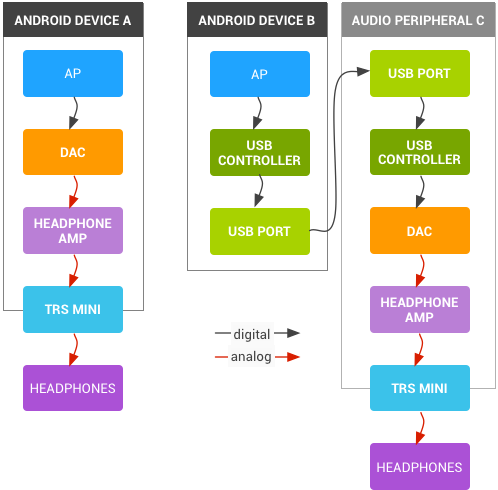When Google announced the Pixel 2 and Pixel 2 XL earlier this week, a lot of people were understandably frustrated to learn that, after making fun of Apple for removing the headphone jack from the iPhone 7, Google decided to do the same.
Following the unveiling of the two devices, Google community manager Orrin published a post to the company’s product forums titled “Listening to your Pixel Phone.” In it, the search giant provides some context for its decision to remove the 3.5 headphone jack from both of its new smartphones.
“Moving to the USB-C audio port with Pixel 2 allows us to provide a better audio and digital experience, as we move towards a bezel-less future,” says the company through one of its community managers. Google product chief Mario Queiroz reiterated also this reasoning in an interview with TechCrunch.
Whatever you think about the company’s stated reason for removing the headphone jack from its new phones (there are, after all, easy-to-find examples of phones that have managed to incorporate a bezel-less display while still retaining a headphone jack), you’ll need to keep some practical considerations in mind if you decide to buy the Pixel 2.
Later in its post, Google writes: “We realize that some of you might be looking for USB-C headphones, and we want to provide some guidance around headphone compatibility with Pixel 2 devices. The main thing to keep in mind is that Pixel 2 devices are compatible with USB-C headphones that support digital audio.” You can find the full list of compatible headphones here.
Google doesn’t provide much information on what “digital audio” means in the context of its new smartphones — though you can read all about it on Android’s developer portal.
Essentially, neither the Pixel 2 nor the Pixel 2 XL include a chip dedicated to converting digital audio signals to analog ones. This chip, known as a DAC, is present in every phone that features a 3.5mm headphone jack.

Not so with the new Pixels, which means should consumers decide they want to invest in a pair of USB-C to go alongside their new phone, they’ll need to buy a pair of headphones that includes a built-in DAC and amplifier (many USB-C headphones include a built-in DAC).
A Google spokesperson confirmed this in a statement issued to MobileSyrup.
“The Pixel 2 does not have a DAC/amp. It transmits audio digitally over USB to your headphones. To give people a choice of audio options, we’ve included an adapter in the box which includes a DAC/amp that can be used with existing headphones.”
Ultimately, this represents a significant paradigm change from how compatibility between smartphones and headphones works with devices that feature a headphone jack. In the case of a device that works with analog headphones, any pair of headphones with a 3.5mm input will work. By contrast, devices like the Pixel 2 require consumers do the extra work of making sure the headphones they’re about to purchase include an on-board DAC.
In fact, Google’s list of USB-C headphones that will definitely work with the Pixel 2 and Pixel 2 XL is quite short.
I should also note not all USB-C to 3.5mm headphone adapters will work with the Pixel 2. To quote the post: “Other USB-C to 3.5mm adapters/splitters should work, but please be sure they are compatible with digital audio and support the proper audio standards.”
Presumably, the majority of USB-C headphones to come out in the future will include the necessary components to work out-of-the-box with smartphones like the Pixel 2. Moreover, all wireless headphones will work as long as they support Bluetooth.
However, for a port format that was supposed to make technology simpler, USB-C seems to have done anything but that.
Source: Google
MobileSyrup may earn a commission from purchases made via our links, which helps fund the journalism we provide free on our website. These links do not influence our editorial content. Support us here.


